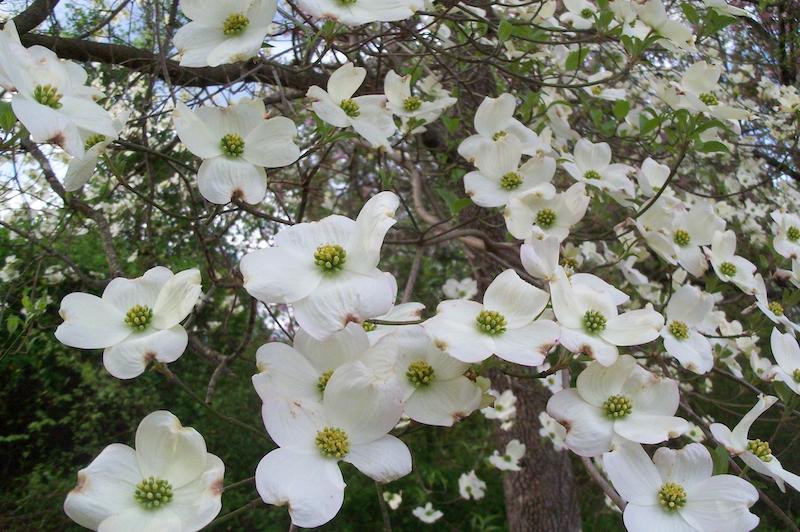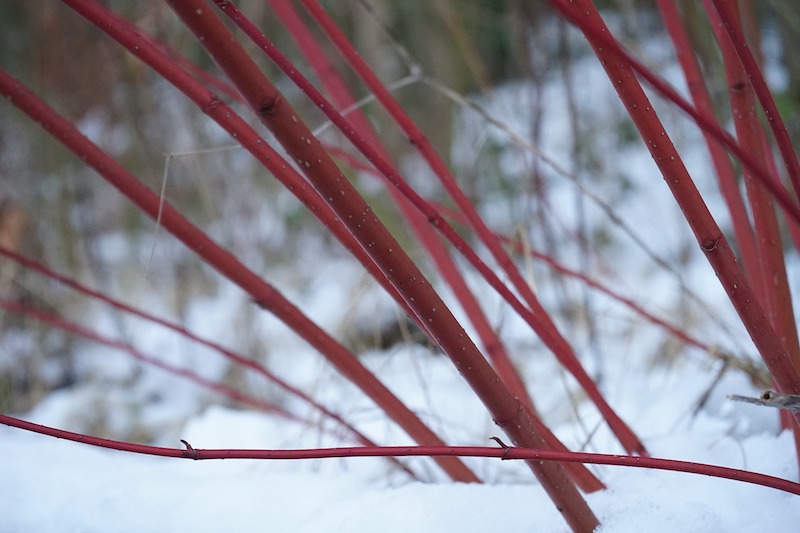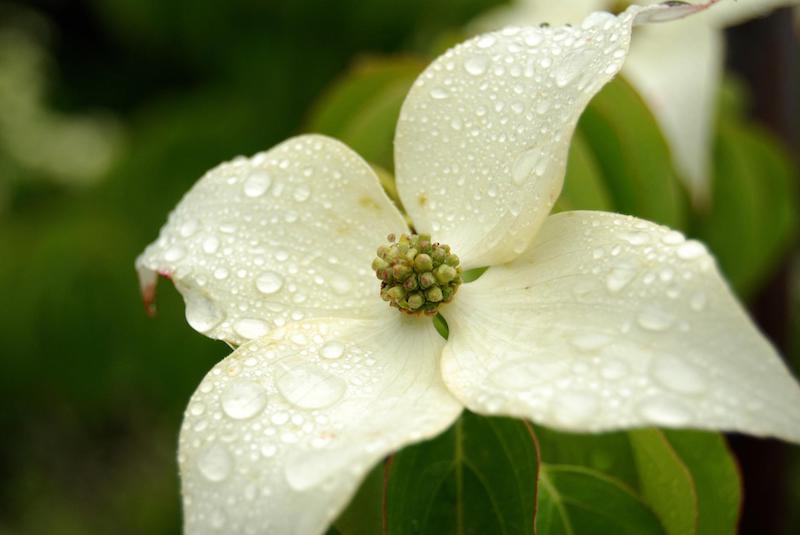Dogwood shrubs and trees are both perennial options for a four seasons friendly garden. Generally cold hardy in zones two through nine, dogwoods are reliable for Spring flowering, and emerging color in the Fall. The shrubs and trees are generally native to the eastern half of the United States. Colors of the flowers for shrubs and trees range from white, to pink, to red.
The shrubs can range from a few feet in height and width, to trees that can reach 20 feet tall. Typically, dogwoods thrive in morning light and afternoon sun intensity should be avoided if at all possible. Gardeners add these perennials to the garden for a beautiful and reliable invitation to the warm season, each year.

Planting Dogwoods
Planting dogwoods should be done in the early Fall ideally, but can be done in the Spring once the ground has thawed. Dogwoods should be planted in an area that gets partial shade, as it’s best to avoid persistent intense sun exposure for these shrubs and trees. An area that is moist will work the best, and dogwoods can even thrive in clay soil and areas that stay wet for prolonged periods of time.
The actual planting process requires a shovel, compost, mulch, and a watering source. It is best to dig a hole three times as wide as the root ball, and just as deep as the root ball. Keeping the roots intact, plant the shrub and surround it with soil that’s been amended with compost. Water thoroughly, being careful not to put any new soil on top of the root ball. Mulch can be spread at the base of the plant to help retain moisture once planted.
Watering Dogwoods
Watering dogwoods should be a priority as they prefer moist soil. Unless the shrub is sufficiently watered naturally, supplemental watering should be considered to maintain moisture. In addition, to avoid drying out, mulch should be placed at the base of the shrub. If a prolonged period of dry weather is observed, dogwoods should be watered supplementally every few days.This is especially true of younger plants that are not yet established. These should be monitored during dry stretches, and supplementally watered more often.
Fertilizing Dogwoods
When dogwoods are initially planted, they should be planted in soil that’s been amended with compost or other organic matter such as manure. If the shrub is mature and established, compost can always be added into the soil surrounding the plant. Routine fertilization should be done twice yearly.
The best time to fertilize dogwoods is in the spring, before flowering occurs and once again in the summer. If the tree is planted within a lawn that’s consistently fertilized, this plant is already receiving supplements from that process and additional intervention should be avoided.
Pruning Dogwoods
There are a couple of reasons to prune dogwoods, whether it be for yearly health maintenance, or as part of a larger rehabilitation effort. For routine health maintenance, in late winter it’s beneficial to remove about a third of old stems, cutting back to the ground. If the shrub needs a larger form of revitalization, it can be cut back to about ten inches above the ground.
The plant should be dormant before pruning is done. It is always beneficial to remove old, dead wood from the plant to make room for new wood to grow. This will also keep mold/fungus at bay. Always remove diseased stems from the plant.
Caring for Dogwoods in Pots
Given the expansive nature of roots that make up dogwood shrubs, a container or pot is not the best place to plant them. It is made more complicated by the fact that these shrubs need well drained, but still consistently moist soil conditions. Pots tend to allow plants to dry out more quickly than if they were planted in the ground.
That being said, dogwoods can be grown successfully in containers if a high attention to moisture and growing space conditions is provided. If wishing to plant a dogwood in a pot, be prepared to repot, amend the soil, supplementally water and/or replant the shrub outside of the container in the ground itself.
Winter Care for Dogwoods
Dogwoods are generally hardy perennials that are used to cold snaps. Winter maintenance generally lines up with pruning responsibilities in the late Winter/early Spring. Pruning should be done while the plant is dormant. Dogwoods do need water year round, but snowfall in cold zones and rainfall in mild zones should keep these shrubs moisturized throughout the Winter. Fertilization can be done to revitalize the plant in the early spring, before blooming is expected to occur.

Common Dogwood Care Questions
Do Dogwoods Like Sun Or Shade?
Flowering dogwoods will generally perform better if they're planted in partial shade. though they can be grown in the sun or shade. Full sun can be a stressor for the trees, and make them more susceptible to disease.
Are Dogwood Trees High Maintenance?
Once they are established, dogwood trees are relatively easy to care for. They may need additional water during hot spells, autumn, or winter but rarely require pruning aside from removing dead branches.
How Can I Make My Dogwood Bloom Better?
Two things, compost, and peat moss. Dogwoods love rich, acidic soils. They don't love chemical fertilizers, so avoid those.
What Are The Dogwood Soil Requirements?
Dogwoods love rich, acidic, naturally nutrient-packed, well-drained soils.
What Is The Growth Rate For Dogwood?
Dogwood trees are slow to moderate growers. There are many conditions that affect growth rates in any plant or tree, soil quality, weather, watering, etc., dogwoods can gain between 1 to 2 feet a year.
Dogwood Leaves Turning Brown?
Leaf scorch is one thing that can cause the leaves to turn brown if the tree is getting too much direct sunlight and/or not enough water. Dogwoods have a preference for light shade and protection from rough, drying winds, which can contribute to the browning of the leaves.
Have a question about dogwoods? Fill out the form below and we will try and get back to your question as soon as possible. We may even feature your question on this article to help other gardeners!
 |
Author Chris Link - Published 06-29-2022 |

